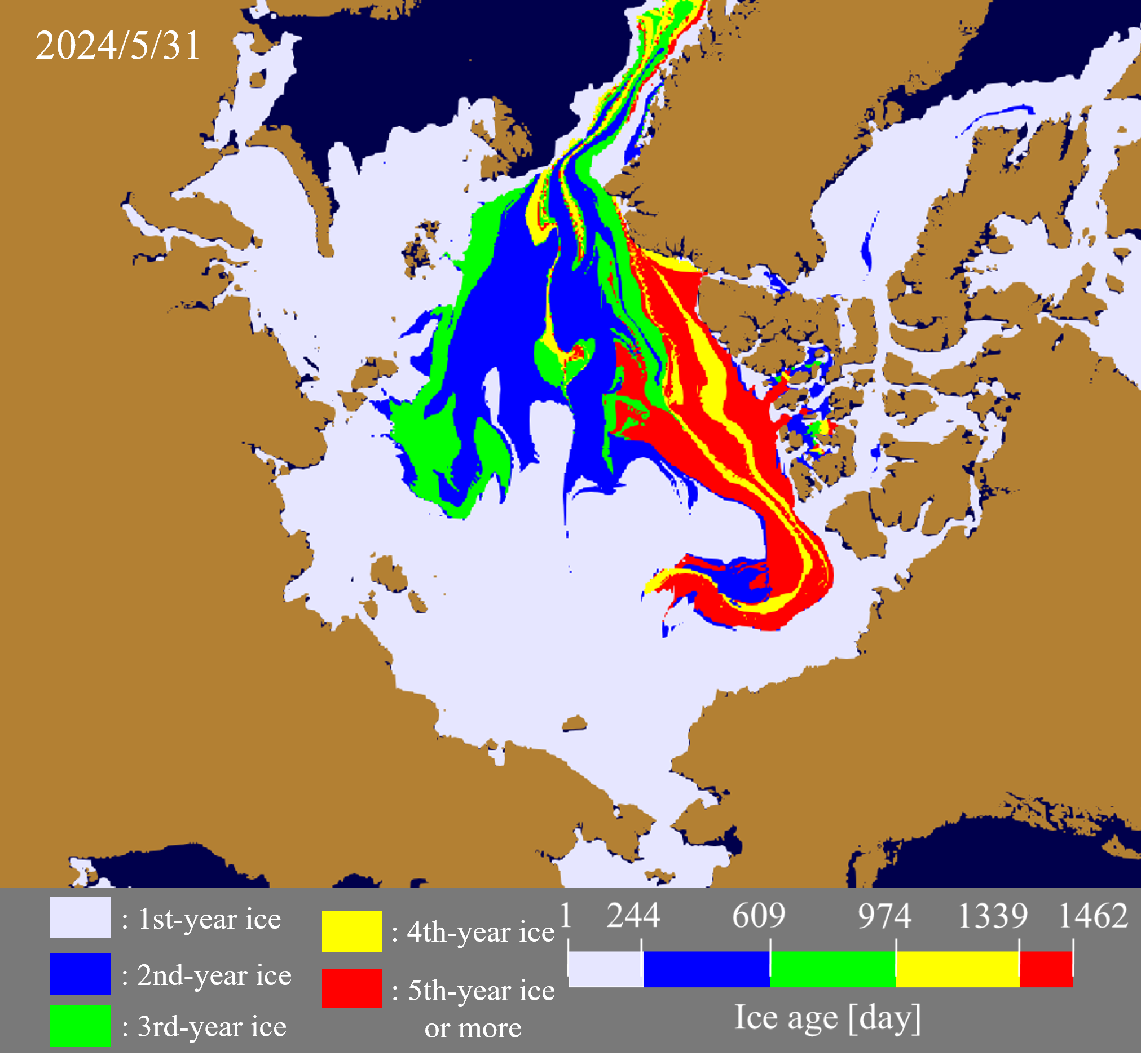2024 Second report
Arctic Sea Ice Information Center, Noriaki KIMURA (Atmosphere and Ocean Research Institute, The University of Tokyo)

- Minimum ice extent will be about 4.78 million square kilometers in September. This is the largest area in the past four years and slightly larger than in 2021 and 2022.
- The Northern Sea Route will open around August 19, and the Canadian side except for Canadian archipelago will open around July 25.
- Sea ice will remain on the Canadian archipelago side of the Beaufort Sea.


The white line indicates the ice edge for 2024 and the colored lines for 2022 and 2023.


The Arctic sea ice extent on September 10, when the sea ice minimum will be about 4.78 million square kilometers. This is the largest in the past four years and about 1% larger than in 2021 and 2022.
Sea ice along the Russian and Canadian sides will retreat at about the same pace as in 2022.
Russian side
Both the timing and the distribution of sea ice extent in the East Siberian Sea are similar to 2022 until mid-August. After that, sea ice in that area will retreat earlier than 2022 and later than 2023. Finally, the sea ice extent will be smaller than 2022 and larger than 2023. Sea ice extent in the Kara Sea and the Laptev Sea will retreat almost the same as in 2022. Compared to the recent 21-year average, sea ice will retreat later than usual in the East Siberian Sea and the Kara Sea, and earlier in the Laptev Sea. The Northern Sea Route will open around August 19.
Canadian side
Sea ice in the Chukchi Sea and the Beaufort Sea will retreat at about the same time in 2022. Sea routes of the Canadian side will open around July 25. On the Canadian Archipelago side of the Beaufort Sea, the same amount of sea ice will remain to melt as in 2022. This is due to the old ice spreading over this area.
The prediction was performed using two factors: sea ice redistribution from winter to spring and sea ice age. The sea ice redistribution was determined from the ice movement from December 1 to April 30. The sea ice age is estimated by the backward tracking of sea ice up to four years from April 30. In addition, by using the mean sea ice drift velocity since May over the past four years, effects of sea ice transport from May 1 to the prediction date was considered. Daily sea ice age distribution data can be downloaded here .
You can also check the daily forecast and sea ice age data (daily and yearly) on Arctic Data archive System (ADS) at National Institute of Polar Research.
If you have any questions about satellite monitoring of the Arctic Ocean, sea ice forecasting, or the forecasting methods used here, please contact the Arctic Sea Ice Information Center (
).
The sea ice forecast and its basic research were started in GRENE, continued to ArCS Project, and has been conducted in ArCS II Project since 2020.


